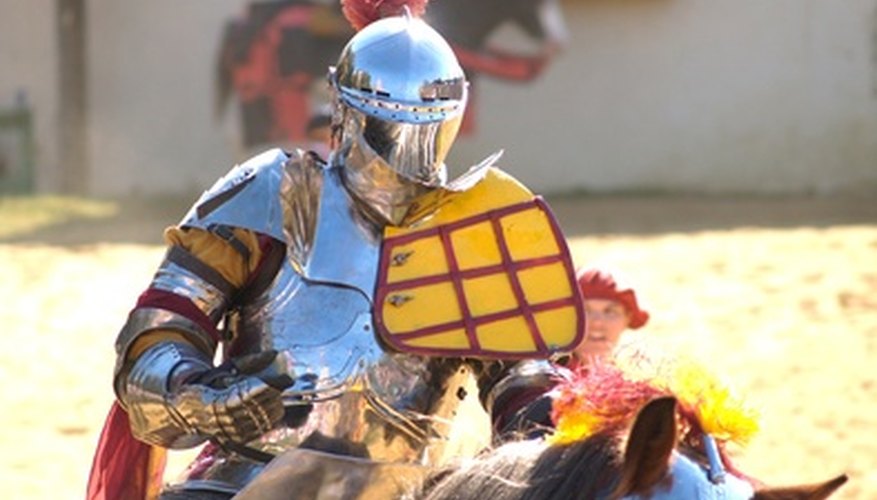Knighthood is conferred upon individuals by the British Royalty under the advisement of Parliament members. Although knighthood stems in chivalrous abilities, it can be conferred upon British citizens, and other persons around the world that have nothing to do with war or battle. There are two types of knights in Britain--knights who have been promoted to the various orders of chivalry and a Knights Bachelor who carries no remarkable distinction. The two classes of knights should be addressed the same. The only distinction made when addressing knights is gender.
- Knighthood is conferred upon individuals by the British Royalty under the advisement of Parliament members.
- Although knighthood stems in chivalrous abilities, it can be conferred upon British citizens, and other persons around the world that have nothing to do with war or battle.
Address a knight in conversation or during an introduction by inserting "Sir" before his first name. For example, a knight by the name David Kingsley, shall be addressed as "Sir David."
Address a knight and his wife by inserting the titles "Sir" and "Lady" before his first and their last name when addressing them together. For example, a knight named David and his wife with the last name Kingsley shall be addressed as, "Sir David and Lady Kingsley."
- Address a knight and his wife by inserting the titles "Sir" and "Lady" before his first and their last name when addressing them together.
- For example, a knight named David and his wife with the last name Kingsley shall be addressed as, "Sir David and Lady Kingsley."
Address a knight in writing by inserting "Dear" before his formal title in at the beginning of the letter--Dear Sir Kingsley. On the address section of the envelope, follow Sir with his full name--Sir David Kingsley. When writing the title on a place card or other text, write just "Sir Kingsley."
Address a female knight with the title "Dame" rather than "Sir." For example, a female knight by the name Julia Jameson should be addressed as "Dame Julia."
